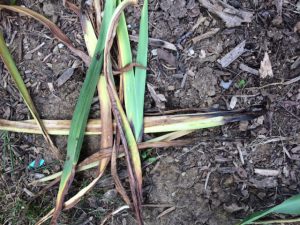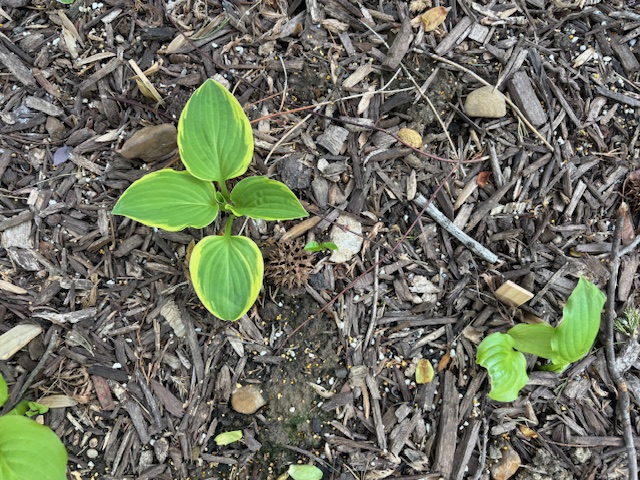Yucky Iris
Views: 2215

I’ve been growing German, or bearded irises for my entire adult life – and trust me, that’s a loooong time! I honestly believe that irises are not only gorgeous, but one of the most trouble free, hardy, not fussy plants a gardener can grow. I’ve planted them in hard clay, in full sun, and in too much shade – they grew. I’ve transplanted them when I shouldn’t have – they grew. I forgot to water the transplants – they grew. A friend gave me a five-gallon bucket full of rhizomes that had been sitting in her garage for two years; I planted them – they grew. And they’ve always bloomed, were never bothered by insects and never eaten by deer or voles. Sure, they would get borers, but the borers didn’t seem to affect them much.
But, early this summer, I was weeding and cleaning a bed (head down, backside up – of course) and I smelled something like a rotten potato. I didn’t think much of it and went on weeding my way down the bed. I noticed some dead iris leaves, not unusual at this time of year, but when I took hold of the brown leaves, I quickly realized they were disgustingly squishy and smelled downright nasty. Good thing I was wearing gloves, but YUCK!
Then, I noticed that the rhizomes were also soft, stinky and rotten. What gives?
The internet is a wonderful thing, at least sometimes! All I had to type in was “iris rot” and I got my answer: Root rot (aka soft rot). It’s caused by a bacteria called Erwinia carotovora, which enters the rhizome through an opening (this is where the borers could cause more damage than I’d thought).
Prevention is much easier than a cure: plant irises in sun; good soil drainage (not hard clay), maybe raise the flower bed help drainage, don’t plant the rhizomes too deep (the top of the rhizome should be slightly above the soil), keep dirt and mulch away from the base of the leaves and provide some space between the plants.
The affected irises in my garden were in a raised bed, enriched with compost, leaves and mulch; planted properly and with as much sun as I could manage. So what could be the problem? Since the irises had been in the same spot and had done just fine for two or three years, I’m inclined to blame the extremely wet late winter and cool spring we had this year.
You can treat Iris rot – dig up the affected plants (hold your nose). Use a knife sterilized with a solution of 1 part bleach to 10 parts water. Cut out all the rotten, diseased part of the rhizome (sterilize the knife after each cut). Replant in a better spot.
I “operated” on my diseased iris, feeling a bit like Hawkeye Pierce in M.A.S.H., and managed to salvage about one third of the rhizome, which I let dry for a few days, then replanted in a new place. We’ll see what happens next… Where’s Colonel Potter and Hot Lips when you need them? Stay Green, Good Friends!
Meet Dona Bergman
Dona Bergman is a founding member, Southwest Indiana Chapter of the Indiana Native Plant & Wildlife Society, and an Advanced Master Gardener.







